- Joined
- May 5, 2012
- Messages
- 1,731
Ask anyone who grew up along the Wasatch Front about the Great Salt Lake and they'll mention bugs or the notorious "lake stink" smell. In the minds of most, the lake is the toilet bowl of the Great Basin. But if you look hard enough, there exists an odd sort of beauty to it. Growing up in south Davis County, I was able to witness more than one epic Great Salt Lake sunset.
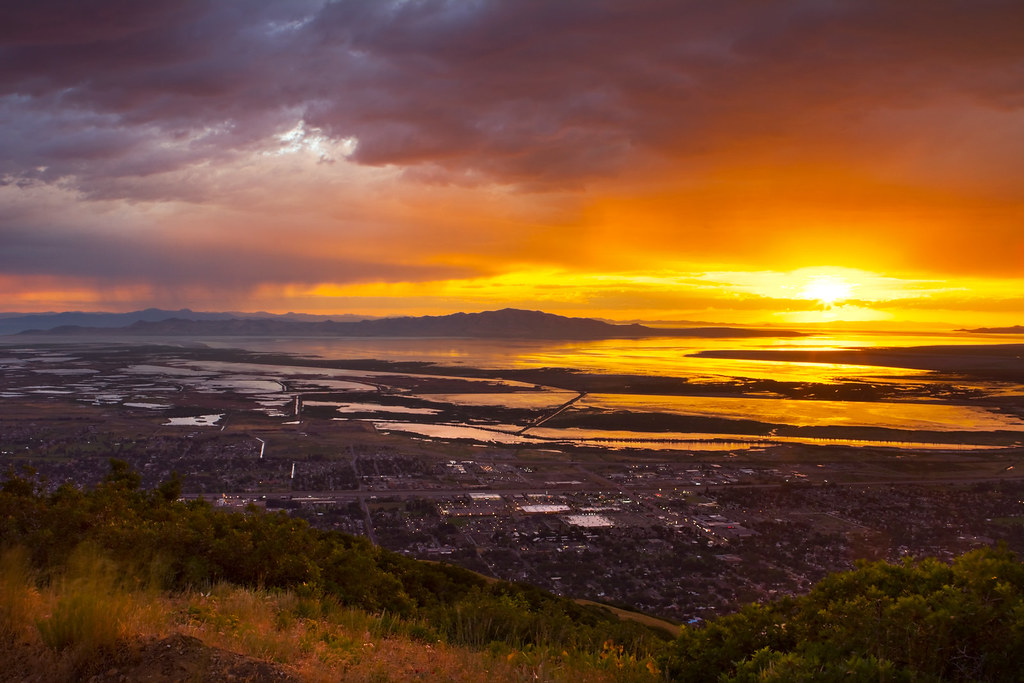
Buckland Flat by ashergrey, on Flickr
The puddle, a remnant of the Pleistocene Lake Bonneville, is a major migratory stop-over point for millions of waterfowl. Several of the smaller islands in the lake serve as rookeries. The most easily accessible of these is Egg Island, a small rock outcropping not far from the larger and much better-known Antelope Island.
During low water, it's possible to walk or wade from Antelope Island over to Egg, but state park rules prohibit setting foot on it. Paddlers can skirt the shores by way of the Antelope Island marina with little effort. It seemed a good destination for the rechristening of my skin-on-frame kayak.
Dark clouds of brine flies walled the causeway on the drive to the maria. Swarming curtains of them rose at least seven feet high. They painted the front of the car, along with everything else in their path, black.
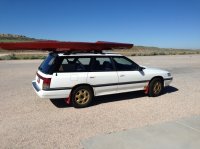
Soon after putting on the water, the engine of an F-16 from Hill Air Force Base roared over head. I craned my neck, looking ahead of the sound to catch the warbird rocketing west. Moments later, two others pursued it through the crystal-blue over the green lake, likely heading for the Utah Test and Training Range.
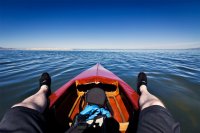
Thousands of birds floated as far as I could see in any direction. They flapped and squawked as I bobbed nearby, or dove under the surface to avoid my passing.
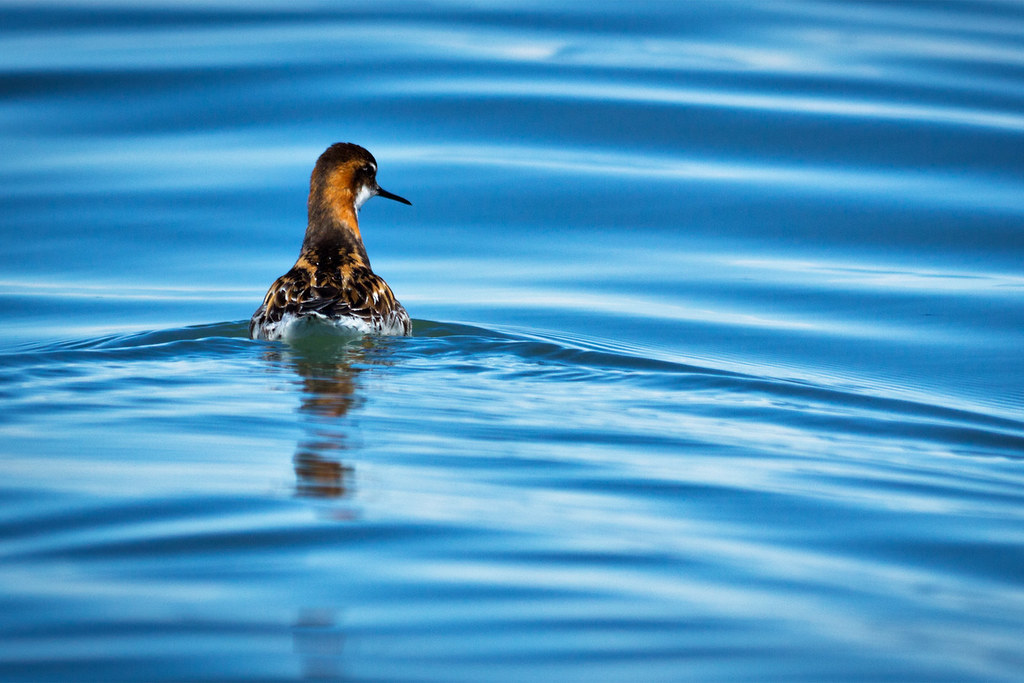
Red-Necked Phalarope by ashergrey, on Flickr
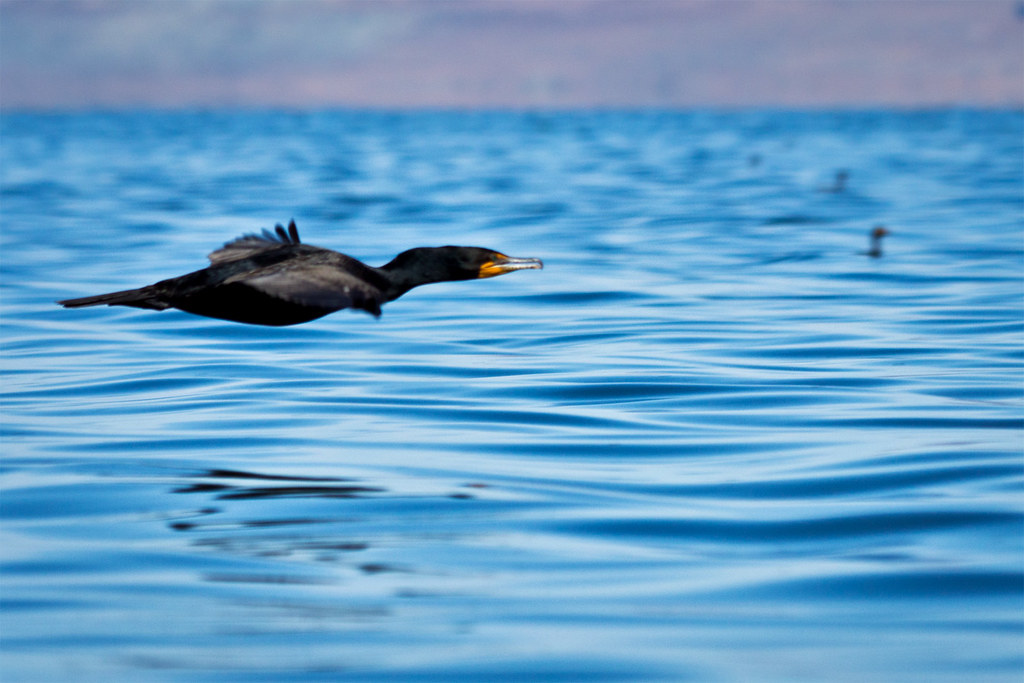
Double-crested Cormorant by ashergrey, on Flickr

American White Pelican by ashergrey, on Flickr
Gulls, grebes, herons and pelicans either call Egg Island home or stop over on their journeys between the arctic and the Gulf of Mexico. They swarmed the rocks like ants on a hill.
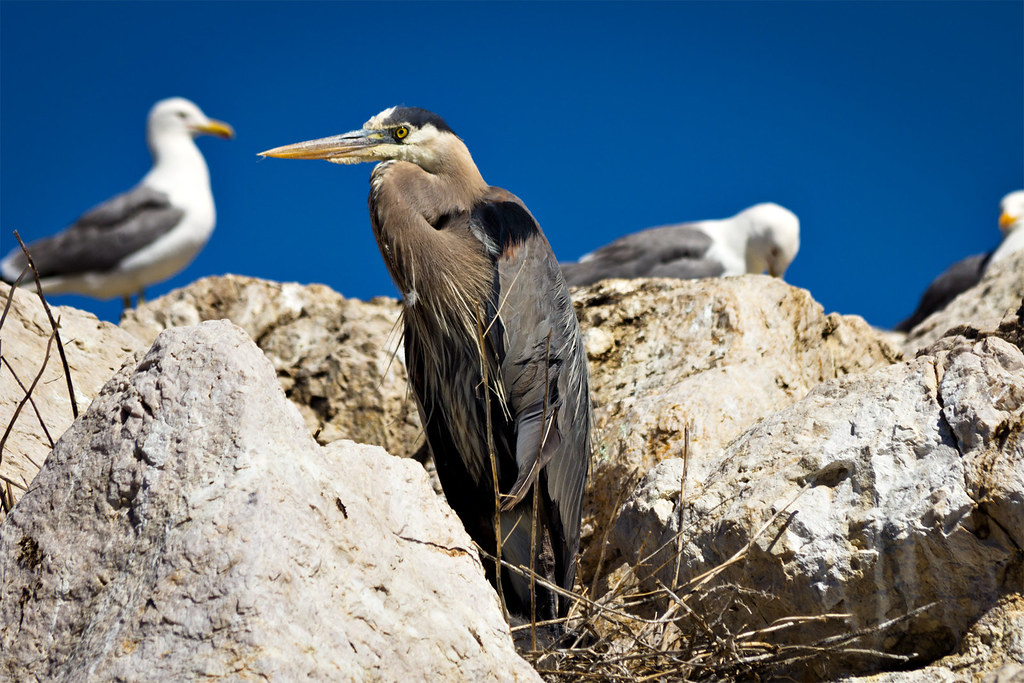
Crooked Neck by ashergrey, on Flickr
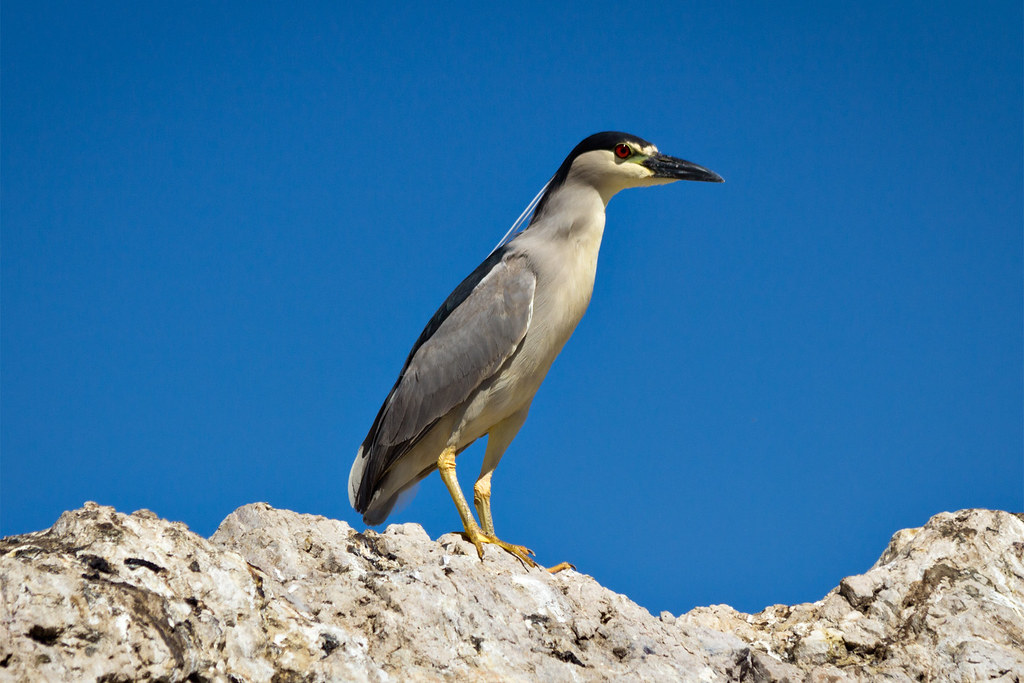
Black-Crowned Night Heron by ashergrey, on Flickr
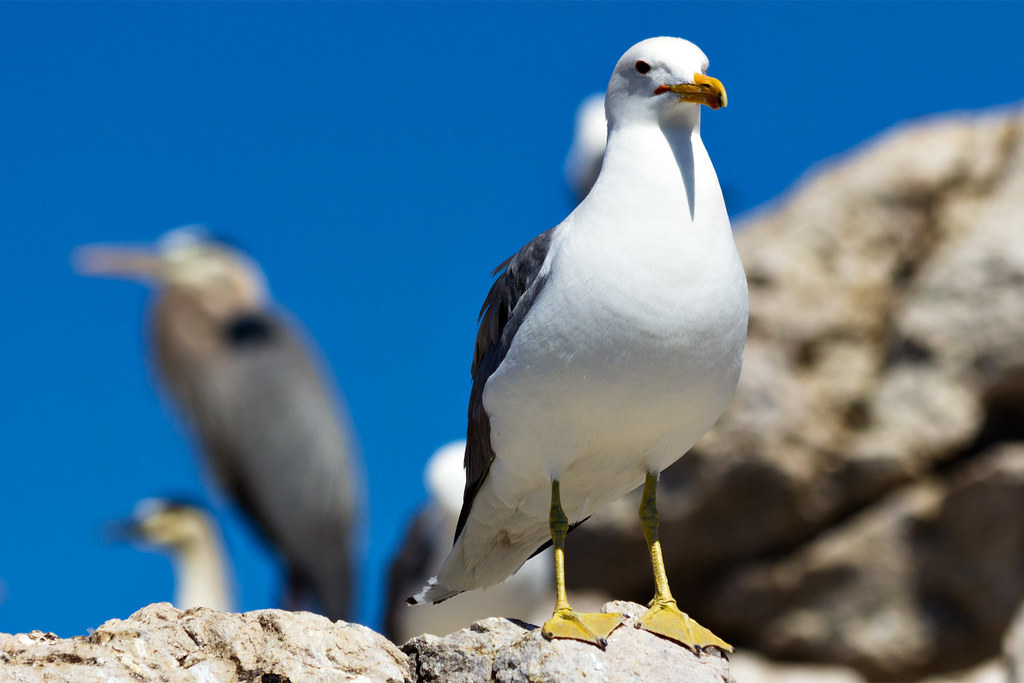
California Seagull by ashergrey, on Flickr
With time to burn, I paddled back east toward the marina. Off to the south, the thump-thump-thump of rotor blades reverberated off Frary Peak. A UH-60 Blackhawk appeared from behind the island.
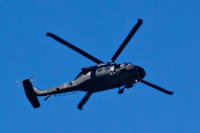
It chugged north up over the marina, turned two low circles there then shot overhead to the north-east, doubtless bound for Hill.
After the Blackhawk departed, I spotted one of the two bridges on the causeway. They allow water to flow through from Buffalo and Farmington Bays into the northern end of the lake.
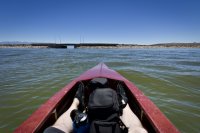
Salt stains on the deck... thankfully they wash off with a little splash of fresh water.
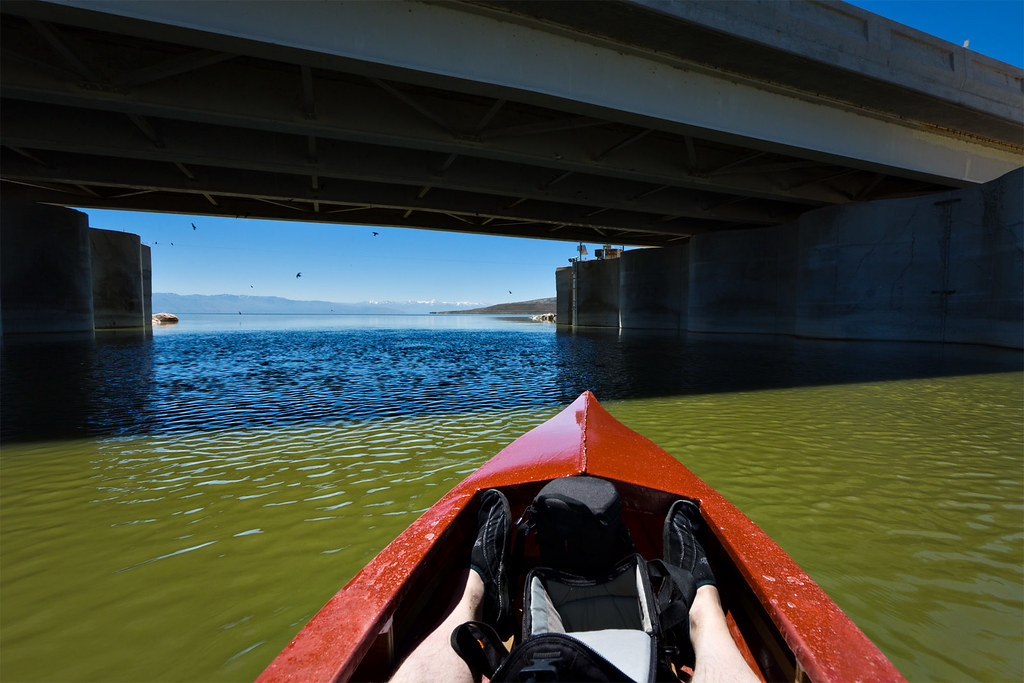
Under the Causeway by ashergrey, on Flickr
The flow under the bridge is subtle, but present. I had to paddle against it to hold position. This is when I noticed the water. In and around the marina it carries a heavy load of algae and bio-matter. The flow pushing north under the causeway appeared much more clean, relatively speaking of course.
[PARSEHTML]<iframe src="http://www.mappingsupport.com/p/gmap4.php?q=http://dl.dropbox.com/u/3847512/GPS/Egg_Island.kml&t=s" frameborder="0" marginheight="0" scrolling="no" width="800" height="800"></iframe><br><br>[/PARSEHTML]There's a story behind the story of this float.
I "built" the frame for this kayak nearly two decades ago, as a teenage boy scout. The quotation marks are appropriate, as most of my building was actually done by adult leaders. I provided light sanding and a lot of standing around. As a result, important design decisions were made without my admittedly uneducated input.
It is far from a traditional design. Open-cockpit skin-on-frame kayaks are rare. The open cockpit adds convenience and comfort, but reduces utility on anything but flat water and limits control.
The original covering consisted of canvas painted with water-based latex house paint. While still lighter than plastic, wood or resin boats of similar size, this design proved heavier than necessary. I twice as a teen paddled it from Sheep Creek to Cedar Springs Marina on Flaming Gorge Reservoir, a roughly 20-mile trek. In the intervening years, several other scouts who followed me borrowed it to do the same.
As is often the case with borrowed goods, the other scouts left my kayak worse off than they found it. When I started planning for my Labyrinth Canyon trip, my hope was to use this kayak. I pulled it down from the rafters of my parents' garage where it had hung unused for years to find it in a sorry state.
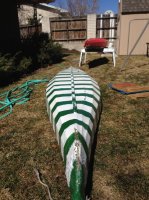
Maybe, I thought, I can rehab this ugly little boat. Layer upon layer of latex paint peeled from the skin. The wood frame felt brittle and dry. It would be a lot of work. It sat a couple of weekends before I conceded rehab was out of the question. Out came the razor.
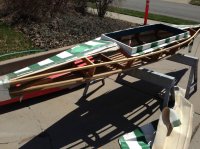
Fiberglass patches covered numerous holes incurred over the years by inexperienced overzealous paddlers. The bow and stern were both heavily glassed. Tearing the brittle fiberglass apart with pliers chunk-by-tedious-chunk took far too much time.
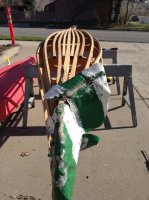
In its original form, the kayak had a wooden keel attached over top of the skin. It provided a convenient rub strip but also looked pretty terrible. In its place went a cedar strip lashed to the keelson, to be contained under the new skin.
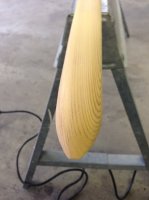
The frame drank two heavy coats of teak oil before it started to repel water once again.
After much research, I opted to reskin the frame using ballistic nylon from Spirit Line. The original canvas skin had been attached by way of staples and duct tape. It proved functional, but ugly. The new version instead has hand-stitching using artificial sinew.
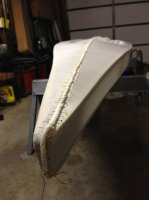
The process of stretching and stitching the skin consumed many hours. More than once I threatened to set the whole contraption on fire. Abrasive fabric rubbed skin raw. My knuckles ached for weeks, giving me a nice preview of the arthritis I'll probably endure later in life.
To waterproof the skin, I used Spirit Line's two-part polyurethane. It's an obnoxious substance with which to work, but looks a fair sight better than the old latex paint job.
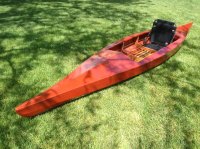
To celebrate the kayak's return to service, I splurged on a new paddle. The Bending Branches Navigator caught my eye, but good reviews of the Werner Camano won me over. Thanks to an REI 30% off sale, it also had an inaugural outing on the Great Salt Lake.
I'm still working out the best way to add conveniences like toggles and deck lines to the boat. All told, I'm into the repairs about $250. Not bad for a lightweight touring boat that can be solo launched. Time will tell how durable this updated design will prove to be.
Featured image for home page:
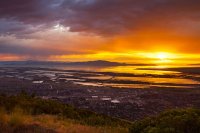

Buckland Flat by ashergrey, on Flickr
The puddle, a remnant of the Pleistocene Lake Bonneville, is a major migratory stop-over point for millions of waterfowl. Several of the smaller islands in the lake serve as rookeries. The most easily accessible of these is Egg Island, a small rock outcropping not far from the larger and much better-known Antelope Island.
During low water, it's possible to walk or wade from Antelope Island over to Egg, but state park rules prohibit setting foot on it. Paddlers can skirt the shores by way of the Antelope Island marina with little effort. It seemed a good destination for the rechristening of my skin-on-frame kayak.
Dark clouds of brine flies walled the causeway on the drive to the maria. Swarming curtains of them rose at least seven feet high. They painted the front of the car, along with everything else in their path, black.

Soon after putting on the water, the engine of an F-16 from Hill Air Force Base roared over head. I craned my neck, looking ahead of the sound to catch the warbird rocketing west. Moments later, two others pursued it through the crystal-blue over the green lake, likely heading for the Utah Test and Training Range.

Thousands of birds floated as far as I could see in any direction. They flapped and squawked as I bobbed nearby, or dove under the surface to avoid my passing.

Red-Necked Phalarope by ashergrey, on Flickr

Double-crested Cormorant by ashergrey, on Flickr

American White Pelican by ashergrey, on Flickr
Gulls, grebes, herons and pelicans either call Egg Island home or stop over on their journeys between the arctic and the Gulf of Mexico. They swarmed the rocks like ants on a hill.

Crooked Neck by ashergrey, on Flickr

Black-Crowned Night Heron by ashergrey, on Flickr

California Seagull by ashergrey, on Flickr
With time to burn, I paddled back east toward the marina. Off to the south, the thump-thump-thump of rotor blades reverberated off Frary Peak. A UH-60 Blackhawk appeared from behind the island.

It chugged north up over the marina, turned two low circles there then shot overhead to the north-east, doubtless bound for Hill.
After the Blackhawk departed, I spotted one of the two bridges on the causeway. They allow water to flow through from Buffalo and Farmington Bays into the northern end of the lake.

Salt stains on the deck... thankfully they wash off with a little splash of fresh water.

Under the Causeway by ashergrey, on Flickr
The flow under the bridge is subtle, but present. I had to paddle against it to hold position. This is when I noticed the water. In and around the marina it carries a heavy load of algae and bio-matter. The flow pushing north under the causeway appeared much more clean, relatively speaking of course.
[PARSEHTML]<iframe src="http://www.mappingsupport.com/p/gmap4.php?q=http://dl.dropbox.com/u/3847512/GPS/Egg_Island.kml&t=s" frameborder="0" marginheight="0" scrolling="no" width="800" height="800"></iframe><br><br>[/PARSEHTML]There's a story behind the story of this float.
I "built" the frame for this kayak nearly two decades ago, as a teenage boy scout. The quotation marks are appropriate, as most of my building was actually done by adult leaders. I provided light sanding and a lot of standing around. As a result, important design decisions were made without my admittedly uneducated input.
It is far from a traditional design. Open-cockpit skin-on-frame kayaks are rare. The open cockpit adds convenience and comfort, but reduces utility on anything but flat water and limits control.
The original covering consisted of canvas painted with water-based latex house paint. While still lighter than plastic, wood or resin boats of similar size, this design proved heavier than necessary. I twice as a teen paddled it from Sheep Creek to Cedar Springs Marina on Flaming Gorge Reservoir, a roughly 20-mile trek. In the intervening years, several other scouts who followed me borrowed it to do the same.
As is often the case with borrowed goods, the other scouts left my kayak worse off than they found it. When I started planning for my Labyrinth Canyon trip, my hope was to use this kayak. I pulled it down from the rafters of my parents' garage where it had hung unused for years to find it in a sorry state.

Maybe, I thought, I can rehab this ugly little boat. Layer upon layer of latex paint peeled from the skin. The wood frame felt brittle and dry. It would be a lot of work. It sat a couple of weekends before I conceded rehab was out of the question. Out came the razor.

Fiberglass patches covered numerous holes incurred over the years by inexperienced overzealous paddlers. The bow and stern were both heavily glassed. Tearing the brittle fiberglass apart with pliers chunk-by-tedious-chunk took far too much time.

In its original form, the kayak had a wooden keel attached over top of the skin. It provided a convenient rub strip but also looked pretty terrible. In its place went a cedar strip lashed to the keelson, to be contained under the new skin.

The frame drank two heavy coats of teak oil before it started to repel water once again.
After much research, I opted to reskin the frame using ballistic nylon from Spirit Line. The original canvas skin had been attached by way of staples and duct tape. It proved functional, but ugly. The new version instead has hand-stitching using artificial sinew.

The process of stretching and stitching the skin consumed many hours. More than once I threatened to set the whole contraption on fire. Abrasive fabric rubbed skin raw. My knuckles ached for weeks, giving me a nice preview of the arthritis I'll probably endure later in life.
To waterproof the skin, I used Spirit Line's two-part polyurethane. It's an obnoxious substance with which to work, but looks a fair sight better than the old latex paint job.

To celebrate the kayak's return to service, I splurged on a new paddle. The Bending Branches Navigator caught my eye, but good reviews of the Werner Camano won me over. Thanks to an REI 30% off sale, it also had an inaugural outing on the Great Salt Lake.
I'm still working out the best way to add conveniences like toggles and deck lines to the boat. All told, I'm into the repairs about $250. Not bad for a lightweight touring boat that can be solo launched. Time will tell how durable this updated design will prove to be.
Featured image for home page:


